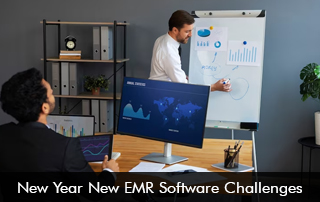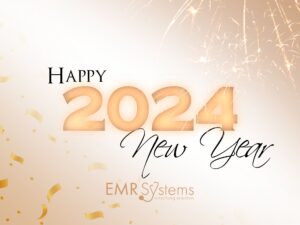2024 is going to be a big year for EMR software. However, that doesn’t mean it won’t come with its set of challenges. As we usher in the new year, let’s take a look at these challenges to Electronic Medical Record (EMR) software, and how healthcare practitioners can overcome them.
Implementation Costs and Budget Constraints
One of the foremost challenges organizations face when adopting new EMR software is the significant upfront cost associated with implementation. From software licensing fees to hardware upgrades and training expenses, the financial burden can strain the budget of healthcare facilities. This is especially true for those with limited resources. To address this challenge, organizations should conduct a thorough cost-benefit analysis. Some of the cost concerns can be addressed by exploring financing options and prioritizing essential features to ensure a cost-effective implementation.
EMR Software Data Migration and Integration Issues
Transitioning from an existing EMR system to a new one involves the complex task of data migration. The challenge lies in seamlessly transferring patient records, historical data, and other critical information without compromising accuracy or security. Integrating the new EMR software with existing systems, such as billing and laboratory interfaces, adds another layer of complexity. To overcome these challenges, organizations must invest time in meticulous planning, conduct thorough data audits, and collaborate closely with vendors. This will ensure a smooth migration and integration process.
User Training and Adoption
The success of any EMR implementation hinges on the acceptance and proficiency of its users. Training staff to navigate the software, understand its functionalities, and adapt to new workflows is a time-consuming and resource-intensive process. Resistance to change is a common obstacle that organizations face during this transition. To address this, healthcare facilities should invest in training programs, offer ongoing support, and involve end-users in the decision-making process. This will create a sense of ownership and engagement.
Workflow Disruptions
Implementing new EMR software can disrupt existing workflows, leading to a temporary decline in productivity and potentially affecting patient care. Organizations must conduct thorough workflow analyses before implementation to identify potential bottlenecks and areas for improvement. Establishing clear communication channels and contingency plans during the transition period can help minimize disruptions. It also ensures a smoother adaptation to the new system.
EMR Software Interoperability Challenges
In the era of connected healthcare systems, interoperability is paramount. Healthcare organizations often use multiple systems for various functions, and ensuring seamless communication between these systems is a challenge. New EMR software should be designed with interoperability in mind, supporting industry standards and integration protocols. Vendors should actively collaborate with other healthcare technology providers to create a cohesive ecosystem that facilitates data exchange and interoperability.
EMR Software Customization and Scalability
Every healthcare facility has unique needs, and one-size-fits-all solutions may not address specific requirements. Customizing the new EMR software to align with the organization’s workflows and preferences is essential for maximizing its utility. Additionally, the software should be scalable to accommodate future growth and changes in technology. Organizations must work closely with vendors to ensure that the EMR software can be tailored to their specific needs. This kind of flexibility to evolve is always going to place EMR software on the edge of advancement.
Security and Compliance Concerns
The healthcare industry is subject to strict regulations and compliance standards to safeguard patient information. Implementing new EMR software requires meticulous attention to security protocols and compliance requirements, such as HIPAA. Ensuring that the new system meets these standards is crucial to maintaining patient trust and avoiding legal ramifications. Organizations should prioritize cybersecurity measures, conduct regular audits, and work closely with vendors to address any potential vulnerabilities.
EMR Software Vendor Relationship Management
Choosing the right EMR software vendor is a critical decision that can significantly impact the success of the implementation. Establishing a strong and collaborative relationship with the vendor is essential for ongoing support, updates, and addressing any issues that may arise post-implementation. Healthcare organizations should thoroughly vet potential vendors, consider their track record, and prioritize those reputations for excellent customer support.
As we embrace the possibilities that 2024 holds, navigating these challenges will be instrumental in achieving improved patient outcomes. We at EMRSystems are at the forefront of providing you access to vendors who meet all these challenges. From us to you – Happy New Year!







